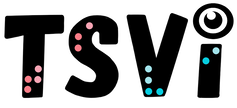- Home
-
Learn
- History of VI >
- Legislation & Laws >
- Vision Professionals >
-
VI Program Resources
>
- Program Printables
- Itinerant Teaching Tips
- Year at a Glance
- VI Program Handbook
- Caseload Analysis
- Organization & Time Management
- Professional Development
- Teacher Standards
- Professional Ethics
- Awards & Recognition
- APH Scholar Program
- Professional Organizations
- Certification Organizations
- Dealing with Challenges
- Professional Publications >
- Relatable Books for All Ages >
- Family Resources >
- Plan
- Basics
-
Teach
- Teaching Strategies >
-
Compensatory Skills Instruction
>
-
Social Skills
>
-
Self Determination
>
- Body Image & Acceptance
- Making Personal Goals
- My Vision Presentation
- My Self-Description
- Create a Personal Data Sheet
- Disclosure Decision
- Disability Statement
- Requesting Help
- Fighting Fears
- My Circle of Support
- Personal Responsibility
- Advocate for Safe Enviroments
- Having Picture Taken
- Coping with Change
- Aging Eyes
- Physical Characteristics
- Political Activism
- Laws Regarding Persons with Disabilities
-
Sensory Efficiency
>
-
Independent Living
>
- Orientation & Mobility Instruction >
- Recreation & Leisure >
-
Career & Vocation
>
-
Grow
- Complete Set Bonus >
-
Recorded Presentations
>
- Webinar: Tips for Being a "Physically Fit" TVI
- Webinar: The Art of Teaching the ECC
- Webinar: Virtual & F2F Strategies
- Webinar: Foundations of Teaching the ECC in the Age of Virtual Instruction
- Webinar: Itinerant Teaching Strategies
- Webinar: Using Themes to Teach the ECC
- Webinar: Conducting a FVLMA
- Webinar: Selecting the Right AT
- Webinar: Developing SMARTER Goals
- Webinar: Determining Service Intensity Using the VISSIT
- Webinar: Activities to Teach the ECC
- Webinar: Accessible Content for BLVI
- Webinar: Accommodations for VI
- Webinar: MIMO Strategies & Activities
- Webinar: SIDPID Strategies & Activities
- Webinar: Standard Course of Study Strategies & Activities
- Webinar: Job Tasks for Job, Career & Life
- Shop
- Jobs
Select Reading MaterialsBy: Carmen Willings
teachingvisuallyimpaired.com March 24, 2024 The selection of picture books to reading to students who have little or no useful vision is very important and particularly for students with additional disabilities. When selecting children's books, poems or songs, choose ones that relate to the unit or to familiar experiences or books that suggest new experiences the class will be encountering. You will also want to consider if the book depends on the pictures. The best way to tell whether or not a story depends on the pictures for meaning is to cover the pictures and read the story yourself or read it to another person. Select stories that do not depend on visual experiences or pictures. Choose short stories, poems or songs that are related to the topic and can be read in one sitting. Vary the selections, particularly for older students as picture books are not always age appropriate. Encourage the students to listen to, retell, and act out stories Make the story come to life by reading with plenty of expressions, especially the dialog. Select reading materials that encourage the reader to make sounds or be extra expressive and that encourage participation (hold objects related to the story, imitate animal sounds in the story, say the repeated parts). Encourage other teachers, aids or therapists to add their sound effects or voices. Talk about new or interesting words in the story, relate the story too familiar experiences or suggest new experiences to try. When selecting books, select those with clear pictures and good visual contrast. Books should be colorful with simple pictures rather than pictures that are visually cluttered. If the book uses photographs, try to select books with a matted finish instead of glossy to reduce glare. Also, look for books where the print is not written across the pictures, but instead, is placed on a solid background. Select books that fit the level of understanding and attention span. For younger students or those with short attention spans, use Mother Goose rhymes, repetitive stories, and simple songs. These stimulate a young child’s curiosity and attention. You might include finger plays to actively engage your student in the event. You may need to provide hand under hand assistance for students with little or no vision. For example, if you are singing “The Itsy Bitsy Spider,” you might show your student how to use the index and middle finger of one of her hands to “crawl” on her other hand. Keep in mind that nursery rhymes and many picture books are not appropriate for older students. You will need to select reading materials that are developmentally and age appropriate. This can be challenging, but for older students, it is more appropriate to select short poems, lyrics from songs, information from a kids almanac or similar materials to incorporate reading concepts. |
Compensatory SkillsConcept Development
Alternative Communication
Emergent Literacy
Access Print
Pre-Braille
Braille Code
Braille Formatting
Braillewriter
Slate & Stylus
Tactile Graphics
nemeth code
Access Classes
Abacus
Organization
Study Skills
Time Management
Listening Skills
|
|
Teaching Students with Visual Impairments LLC
All Rights Reserved |
- Home
-
Learn
- History of VI >
- Legislation & Laws >
- Vision Professionals >
-
VI Program Resources
>
- Program Printables
- Itinerant Teaching Tips
- Year at a Glance
- VI Program Handbook
- Caseload Analysis
- Organization & Time Management
- Professional Development
- Teacher Standards
- Professional Ethics
- Awards & Recognition
- APH Scholar Program
- Professional Organizations
- Certification Organizations
- Dealing with Challenges
- Professional Publications >
- Relatable Books for All Ages >
- Family Resources >
- Plan
- Basics
-
Teach
- Teaching Strategies >
-
Compensatory Skills Instruction
>
-
Social Skills
>
-
Self Determination
>
- Body Image & Acceptance
- Making Personal Goals
- My Vision Presentation
- My Self-Description
- Create a Personal Data Sheet
- Disclosure Decision
- Disability Statement
- Requesting Help
- Fighting Fears
- My Circle of Support
- Personal Responsibility
- Advocate for Safe Enviroments
- Having Picture Taken
- Coping with Change
- Aging Eyes
- Physical Characteristics
- Political Activism
- Laws Regarding Persons with Disabilities
-
Sensory Efficiency
>
-
Independent Living
>
- Orientation & Mobility Instruction >
- Recreation & Leisure >
-
Career & Vocation
>
-
Grow
- Complete Set Bonus >
-
Recorded Presentations
>
- Webinar: Tips for Being a "Physically Fit" TVI
- Webinar: The Art of Teaching the ECC
- Webinar: Virtual & F2F Strategies
- Webinar: Foundations of Teaching the ECC in the Age of Virtual Instruction
- Webinar: Itinerant Teaching Strategies
- Webinar: Using Themes to Teach the ECC
- Webinar: Conducting a FVLMA
- Webinar: Selecting the Right AT
- Webinar: Developing SMARTER Goals
- Webinar: Determining Service Intensity Using the VISSIT
- Webinar: Activities to Teach the ECC
- Webinar: Accessible Content for BLVI
- Webinar: Accommodations for VI
- Webinar: MIMO Strategies & Activities
- Webinar: SIDPID Strategies & Activities
- Webinar: Standard Course of Study Strategies & Activities
- Webinar: Job Tasks for Job, Career & Life
- Shop
- Jobs

